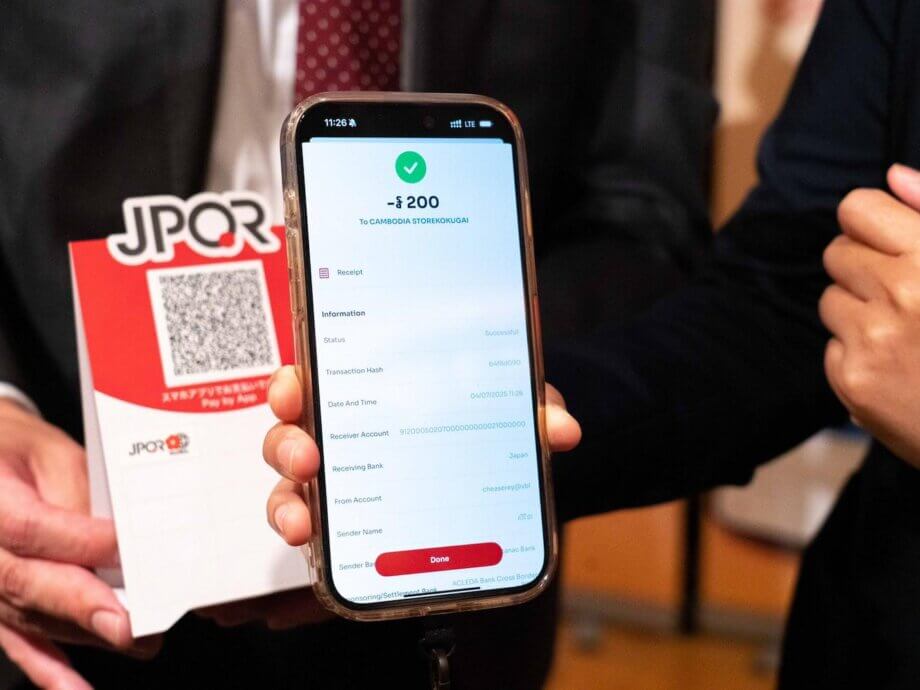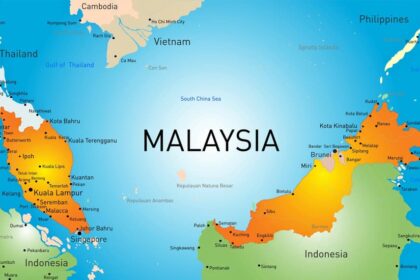Cambodia and Japan Launch Cross-Border QR Code Payments
The financial landscapes of Cambodia and Japan have entered a new era with the official launch of cross-border QR code payments, marking a significant milestone in digital finance and bilateral cooperation. This initiative, announced on July 4, 2025, at the World Expo in Osaka, enables Cambodian travelers to make seamless payments in Japan using their local banking or mobile payment apps. The move is expected to boost tourism, trade, and investment between the two nations, while also serving as a model for regional digital payment integration.
- Cambodia and Japan Launch Cross-Border QR Code Payments
- What Is the Cambodia-Japan Cross-Border QR Payment System?
- Background: The Road to Interoperability
- Impacts on Travelers, Businesses, and the Economy
- Regional and Global Context: Cambodia’s Digital Leap
- Technical and Operational Details
- Broader Implications: A Model for Regional Integration
- Looking Ahead: What’s Next?
- In Summary
What Is the Cambodia-Japan Cross-Border QR Payment System?
The new system connects Cambodia’s KHQR (Khmer QR) and Japan’s JPQR (Japan QR) payment platforms, allowing interoperability between the two countries’ digital payment infrastructures. In practical terms, Cambodians can now use apps like Bakong, ACLEDA Super App, and Sathapana Mobile to scan JPQR codes at Japanese merchants and pay directly from their Khmer riel bank accounts. This eliminates the need for cash or currency exchange, making transactions more convenient and secure for travelers and businesses alike.
The launch is the result of a series of agreements and collaborations between the National Bank of Cambodia (NBC), the Payments Japan Association (PJA), and Japan’s Ministry of Economy, Trade and Industry (METI). The first phase focuses on enabling Cambodian users to pay in Japan, while a second phase—expected to roll out soon—will allow Japanese users to make payments in Cambodia by scanning KHQR codes.
How Does It Work?
For Cambodian users, the process is straightforward:
- Download and register with a KHQR-compatible app such as Bakong, ACLEDA Super App, or Sathapana Mobile.
- When shopping or dining in Japan, look for merchants displaying the JPQR code.
- Open the app, select the payment option, and scan the JPQR code.
- The payment is processed in real time, debiting the user’s Khmer riel account and crediting the Japanese merchant in yen.
This system leverages existing digital payment infrastructure, making it accessible to millions of Cambodians who already use mobile banking and e-wallets.
Background: The Road to Interoperability
The journey toward this cross-border payment system began with a Memorandum of Cooperation signed in December 2023 between NBC and METI, focusing on unified QR code-based payments. This was followed by a Memorandum of Understanding (MoU) in April 2025 between NBC and PJA, which designated PJA as the project operator and set the stage for technical and operational integration.
Key Cambodian banks, including ACLEDA and Sathapana, were appointed as sponsoring banks, responsible for integrating cross-border banking systems, providing payment services, and supporting dispute resolution. On the Japanese side, NETSTARS Co., Ltd. was selected as the payment and settlement operator, ensuring stable system connectivity and technical support.
Why QR Code Payments?
QR code payments have become increasingly popular in Asia due to their simplicity, low cost, and compatibility with smartphones. Unlike traditional card-based systems, QR payments do not require expensive hardware or complex infrastructure, making them ideal for both large retailers and small businesses. The interoperability between KHQR and JPQR is part of a broader trend in the region, where countries are linking their payment systems to facilitate cross-border commerce and tourism.
Impacts on Travelers, Businesses, and the Economy
The immediate beneficiaries of the new system are Cambodian travelers to Japan, who can now pay for goods and services without worrying about currency exchange or carrying large amounts of cash. This is particularly significant as Japan remains a popular destination for Cambodian tourists, students, and businesspeople.
For Japanese merchants, the system opens up access to Cambodian customers, potentially increasing sales and fostering closer economic ties. Local businesses in both countries, regardless of size, can now accept cross-border QR payments, offering more payment options and improving operational efficiency.
Boosting Tourism and Investment
Experts believe that the new payment system will stimulate tourism and investment flows between Cambodia and Japan. Hong Vanak, an economist at the Royal Academy of Cambodia, notes that simple and efficient payment methods create new momentum for attracting foreign direct investment and tourists. The ability for Japanese visitors to eventually pay in Cambodia using their own apps (in the upcoming second phase) is expected to further enhance these benefits.
Hong Vanak, economist at the Royal Academy of Cambodia, explains:
“When payment methods are simple and efficient, it creates new momentum for attracting more foreign direct investment into Cambodia. The launch of this QR code-based cross-border payment system provides great convenience, especially for tourists. Once Japanese people can pay using QR codes in Cambodia, we can expect even more Japanese tourists and investors.”
Reducing Costs and Enhancing Security
By enabling direct payments from bank accounts, the system reduces the need for cash handling and currency exchange, which can be costly and risky. Transactions are processed securely in real time, minimizing the risk of fraud and errors. This is particularly important for small and medium-sized enterprises (SMEs), which often face barriers to accepting international payments.
According to ACLEDA Bank, the initiative will help local businesses manage operations securely and conveniently, reduce costs, and stimulate economic growth. The bank also plans to expand cross-border QR payments to other countries in the region, further integrating Cambodia into the global digital economy.
Regional and Global Context: Cambodia’s Digital Leap
Cambodia’s move to link its QR payment system with Japan is part of a broader strategy to modernize its financial sector and promote digital inclusion. The country has already established similar cross-border QR payment agreements with Vietnam, Thailand, Laos, South Korea, Malaysia, and UnionPay International (UPI). In October 2024, Cambodia also partnered with Ant International to enable Alipay Plus users to pay in Cambodia via KHQR, connecting with over 1.6 billion users worldwide.
This rapid digitalization is helping Cambodia leapfrog traditional banking barriers, lower transaction costs, and promote the use of the Khmer riel. It also aligns with regional efforts under the ASEAN Payment Connectivity initiative, which aims to make cross-border payments faster, cheaper, and more transparent across Southeast Asia and beyond.
Japan’s Role and Regional Ambitions
Japan’s Ministry of Economy, Trade and Industry has been actively pursuing cross-border QR payment operability with regional partners, targeting full implementation by 2025. The collaboration with Cambodia is seen as a pilot for broader integration with other ASEAN countries and non-ASEAN states such as India and Hong Kong.
Fukuda Yoshio, General Director of Payments Japan Association, highlights the broader vision:
“We hereby express our profound appreciation to all stakeholders who supported the realization of this initiative, with particular gratitude to the governments of both Cambodia and Japan. Today’s announcement marks a pivotal step in this endeavor. We anticipate that this linkage will contribute to the increase of cross-border exchanges beyond payment, creating connections and networks that would enable continued growth and prosperity for Cambodia and Japan.”
Technical and Operational Details
The cross-border QR payment system is built on robust digital infrastructure, leveraging the Bakong platform in Cambodia and the JPQR standard in Japan. Bakong, launched by the National Bank of Cambodia, is a blockchain-based payment system that supports both Khmer riel and US dollar transactions. As of 2024, Bakong had over 642,500 registered users and processed more than 600 million transactions, with a significant increase in riel usage.
JPQR, Japan’s unified QR code standard, was developed to streamline digital payments across the country’s diverse financial ecosystem. By integrating these two systems, the initiative ensures compatibility, security, and real-time settlement for cross-border transactions.
Role of Partner Banks and Operators
ACLEDA Bank and Sathapana Bank serve as sponsoring banks in Cambodia, providing technical support, payment services, and dispute resolution. Their Japanese counterparts, including Sumitomo Mitsui Banking Corporation (SMBC) and NETSTARS, handle settlement and network operations in Japan. This public-private partnership model ensures that both regulatory and operational challenges are addressed effectively.
Broader Implications: A Model for Regional Integration
The Cambodia-Japan QR payment linkage is more than a technical achievement; it represents a new model for regional financial integration. By adopting common technical standards and fostering regulatory cooperation, the initiative paves the way for other countries to establish similar connections. This is particularly relevant as ASEAN markets become more digitalized and interconnected.
Duch Darin, economist, emphasizes the regional significance:
“The KHQR–JPQR consortium is significant in realizing the visions for the Digital Economy of Cambodia and Japan. It is in line with the strategic vision of NBC to drive the financial inclusion and innovation agenda using digital public infrastructure, such as Bakong and KHQR. Additionally, JPQR is targeting similar aims, making it a very compatible and forward-looking collaboration.”
By reducing reliance on cash and foreign exchange, the system also contributes to financial stability and inclusion, encouraging more people and businesses to participate in the formal financial sector.
Looking Ahead: What’s Next?
The successful launch of Phase 1 is just the beginning. The second phase, which will allow Japanese users to pay in Cambodia by scanning KHQR codes, is expected to roll out by the end of 2025. This will further enhance bilateral exchanges and set a precedent for other cross-border payment initiatives in the region.
Both the National Bank of Cambodia and the Payments Japan Association have expressed their commitment to working closely with public and private sector partners to ensure the smooth implementation and expansion of the system. The ultimate goal is to create a seamless, secure, and inclusive digital payment environment that benefits travelers, businesses, and economies on both sides.
In Summary
- Cambodia and Japan have launched a cross-border QR code payment system, enabling Cambodians to pay in Japan using local apps like Bakong, ACLEDA, and Sathapana.
- The initiative is the result of collaboration between the National Bank of Cambodia, Payments Japan Association, and Japan’s Ministry of Economy, Trade and Industry.
- Phase 1 allows Cambodian users to scan JPQR codes in Japan; Phase 2 will enable Japanese users to pay in Cambodia by scanning KHQR codes.
- The system simplifies payments for travelers, reduces the need for cash and currency exchange, and enhances security and convenience.
- Local businesses in both countries benefit from more payment options and real-time, cost-effective transactions.
- The initiative is expected to boost tourism, trade, and investment, and serves as a model for regional digital payment integration.
- Cambodia’s rapid digitalization and regional payment linkages position it as a leader in cross-border fintech innovation.
- The collaboration reflects a broader trend toward interoperable, cashless economies in Asia, with potential for further expansion and integration.












